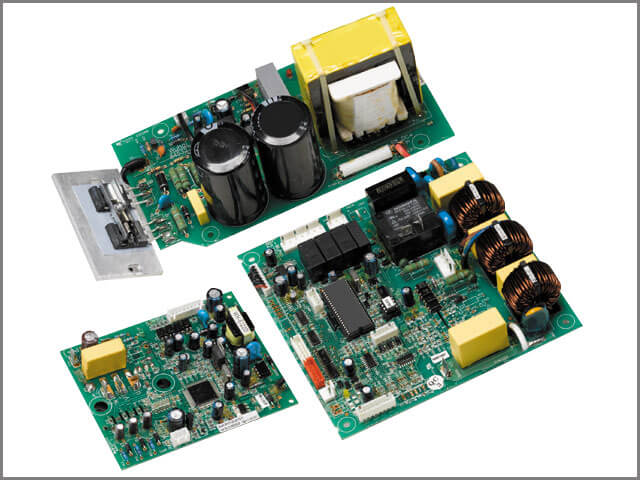Power supply design is no easy task. You need to consider a number of electrical components and the circuit boards they’ll exist within perfect technological harmony. And power supply circuits are the recharging sources. Some have sub-circuits, some do not, but it is definitely common for printed circuit boards, or PCBs, to be power supplies in most designs.
Interestingly, PCBs are converters for an incoming energy supply and out. And it’s critical PCBs consider load, system, and circuit, meeting power supply PCB layout guidelines. You could say it’s all about source and load. Let’s take a closer look at the types of power supply circuit boards and four main power supply design essentials.
Power Supply Circuit Boards Explained
The bridges between two electrical sources happen via three types of power supply circuits:
- Output to AC Output
- AC Input to Frequency Converter
- DC Input to Inverter
When it comes to regulated power supplies, you need devices in place to maintain the voltage output. These are known as voltage regulators, but they sometimes do not exist in power supplies that are not regulated, causing varying output. There are also basic operational types; linear and switch-mode power supply.
Linear Power Supply
Linear power supply can be utilized to convert AC to DC. There is a lot involved in this, such as circuit design components like voltage regulators and IC1, which will provide consistent voltage. Why is linear power supply important? It is the basic ops of circuits for a design. It’s simple, affordable, reliable, and is lean.
“Linear regulators can be implemented as an entire package and added to a circuit with only two additional filter capacitors,” Autodesk explained. “This makes them easy for engineers of any skill level to plan and design from scratch.”
Switch-Mode Power Supply
If a linear power supply is not enough, you can utilize switch-mode power supply, also called SMPS, in your PCB design. Normally SMPS circuits are more complex and the switching involved can be a bit noisier. This can cause issues with the trace routing in your PCB layout. If you’re designing digital products, like smart voice search, you are probably going to opt for SMPS circuits.
4 Power Supply Design Essentials
Designing circuit boards utilizing linear or SMPS, you may find a few issues. You need to consider heat, EMI, noise, and weight. You also need to consider the power supply filter design. All these considerations hinge on a few power supply design essentials when you design your PCB. Let’s take a closer look.
1. Have An Optimized Filter Design
Performance is important, and the performance of the filtering design is even more so when it comes to power supply design. First, you need to choose the right values, like filter components, resistance, capacitance, and inductance. The values may not always match the calculated ones, but utilizing a combination of values can ensure best responses via simulations.
2. Board Type And Materials Used Matter
Matching materials to board type is another power supply essential for a circuit board build. You need to ensure that your circuit board can endure the temperatures that will be generated when the product prototype is tested.
This makes material critical. Materials need to adhere to coefficient of thermal expansion, also called CTE. SMPS builds with high speed design need a number of components that can withstand temps like dielectric constant, dissipation, Ploss, and more.
3. Use Copper Weights That Meet Requirements
It is very possible to have high power supply currents, and this makes trace widths and thickness of copper wiring important. When the proper copper thickness is used, the currents can be carried adequately. Layout of copper wiring is also essential, because you need to also meet manufacturer guidelines and DFM rules.
4. Proper Thermal Dissipation Needs To Be Priority
Getting that extra heat out of your power supply boards is a must. In order to have a safe, properly working product, you must design ways for thermal dissipation to happen easily. For instance, thermal pads can be useful for proper thermal dissipation. However, you also need thermal resistance in your PCB design and manufacturing, since thermal resistance can ensure solder joint quality.
In Conclusion . . .
The above four power supply design essentials can be a great road map for your next circuit board build. PCB design and ensuring proper testing is an important aspect to bringing products to market that last, and keep your business, or clients, competitive. What are your PCB design tips? We want to hear from you.
Author Bio – Robin is a Senior VP of Business Intelligence Development and has assisted the Fortune 1000 company with expertise in the web as a whole, including ground-zero marketing efforts that benefit both consumer and vendor. He is also contributor on Esprittoday.




